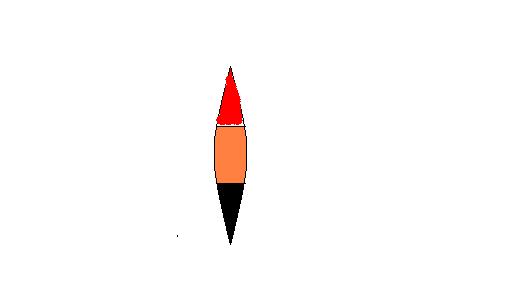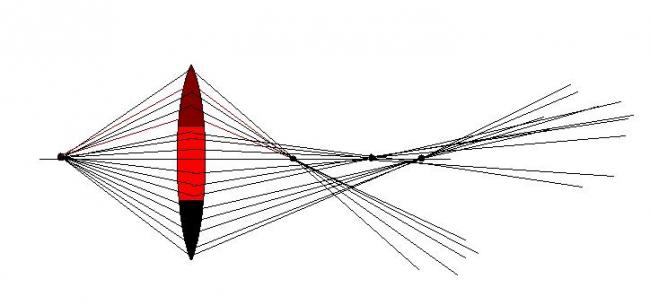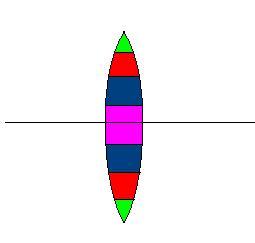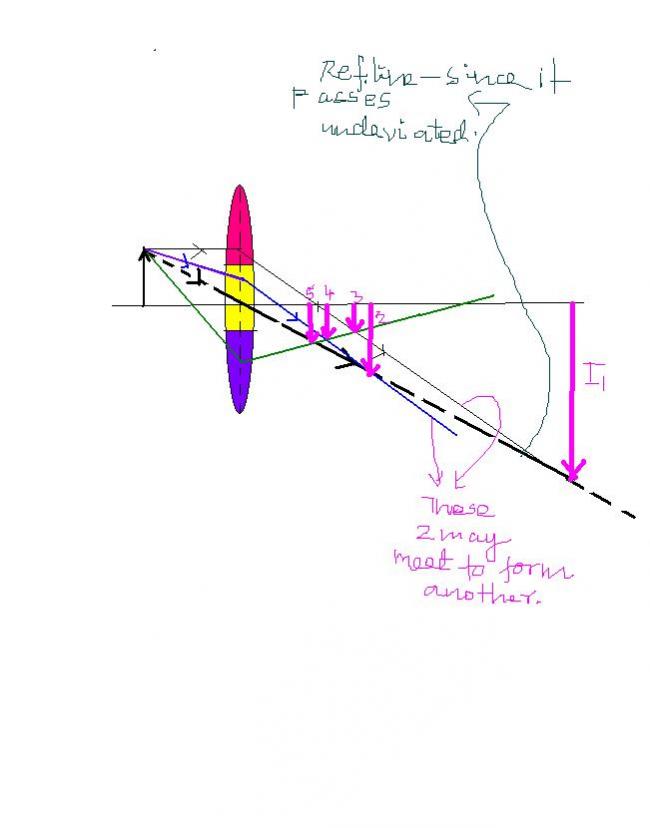4 images for prashants q
How many images are formed when this lens is used? No portion of the lens is opaque [4]

-
UP 0 DOWN 0 3 46

46 Answers
my vote is for 3 only :)
It is bcos the others will just be like single ray things...
In actual optics all rays will converge..
So the other images formed will not be prominent at all :)
nishant bhaiya will give a complete explanation with answer once he comes back from his "winter vaccations" :P
OK. Deciding the answer by votes.
For your favourite number of images, type NoI followed by your choice for the number of images(x)
******Conditions********
x ε Z+
it depends on the observer whether he can see or not and whats the power of his specs... :P
however for iit exam ans 3 does fine cos we always use straight screen
I think Nishant's explanation is perfect. There will be 3 sharp images formed in a fuzzy background.
Explanation is very simple. From Aragorn's image, any part of the lens having the same μ will focus the light at the same point, thus forming 3 sharp images. However, if you take rays incident on different μ parts(say μ1 and μ2), then their point of convergence will depend on which ray you have chosen. I mean if you take rays incident on different part of the (μ1 and μ2), they'll meet at different places hence the fuzziness in the background.
This image might help in giving you the idea of the concept
How about a type of lens which has different materials, which is symmetrical about the principal axis? Like the one shown
THanks for the diagram sir. Have you seen this thread
http://targetiit.com/iit_jee_forum/posts/colours_again_961.html?
PLs reply to that question. [1]
thanks for the explanation , i got carried away by the fact that an image is formed if just 2 rays intersect at a point
yes i also felt that at the first sight...
now understood..
thanx prashant and nishant bhaiya(s).
yp.. is it 4?
Same here. I also felt that img is formed whenever any 2 rays intersect!
For Prashant Bhaiyyah's question, 4 distinct and sharp images will be formed if an object is kept before it [4]
yeah guys, you are right ..
in this case there will be 4 sharp images (in a fuzzy background)
Hint: Use ray diagram for a lens with 2 variety of material.
That will do good.
I don't know, Akshay[2]. I just thought of this question and posted it.
